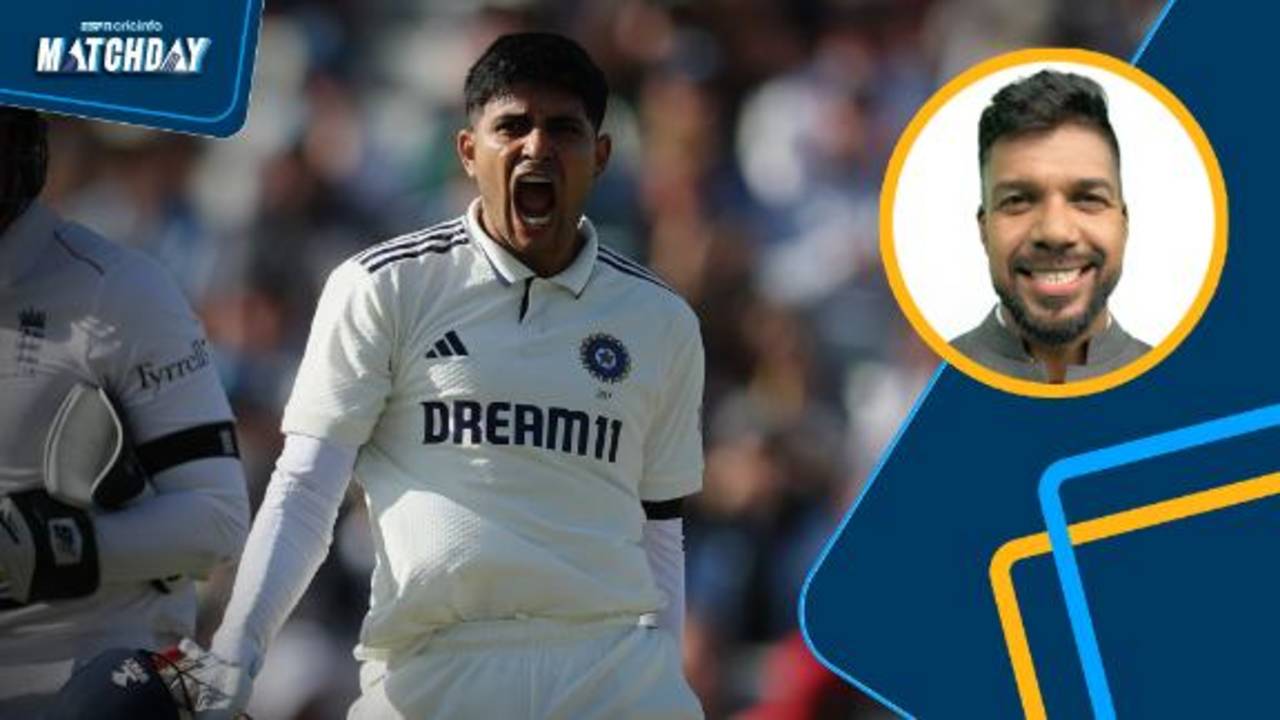Gill walks the talk even as India stumble to unforced errors
The captain delivered a masterclass in control and accountability, standing tall amid the team's various tactical tangles
Sidharth Monga
02-Jul-2025
There is a disturbing trend among these young batters of late: getting out in non-traditional manners with little jeopardy around. So Shubman Gill had to lead by example at Edgbaston.
The three India innings so far have been enough to bring to mind memories of the Hyderabad Test against England in 2023-24. Ollie Pope enjoyed luck, all right, but India also missed batting them out in the first innings by getting out in ways that teams don't plan dismissals. Yashasvi Jaiswal caught and bowled trying to hit a four, on 80; Rohit Sharma and Gill out in the 20s trying to hit sixes; KL Rahul and Shreyas Iyer caught at deep midwicket on 86 and 35.
Go back to Headingley. Three of the five centuries ended in unforced errors. India again failed to bat England out. Story same: young batters get into dominating positions, but get out in non-traditional manners with little jeopardy. In the lead-up to this Test, Gill didn't blame others. He singled himself out for getting out the way he did when there were more runs to be had.
Not every century has to be a test by conditions. Sometimes you have to overcome the test by match state, by opposition plans, by the state your own career is in, by the responsibility you have as captain and the scrutiny that comes with it.
The opposition plans have been apparent. England have been bowling straighter at him, trying to work with the incoming ball that has been getting him out. Among specialist batters in this series, only Zak Crawley and Ollie Pope have faced a higher percentage of balls ending up on the stumps line from right-arm, over-the-wicket pace. Even from Leeds to Birmingham, the plans have changed: only 22.4% at the stumps line in Leeds, 33.5% here.
Gill was equal to it, scoring 33 runs on the flick and nine on the on-drive. In all, he scored 61 runs on the on side. Among 84 balls that he sent into the leg side, Gill played false shots to only four.
This was perhaps a regulation adjustment for him on a slow flat pitch, but India had dug themselves a hole when it comes to the state of the match. Two of the five wickets had fallen to unforced errors. There was a "here we go again" feel to the scorecard.
Add to it the general chaos around India's position in the series. Having lost the unloseable Test in Leeds, they seemed confused with their selection for the Test amid the confusion around which of the three matches Jasprit Bumrah should play. It wasn't the baptism the young captain would have wanted in only his seventh first-class match as captain.
So, amid all that, Gill dug in, living the words he spoke before the Test. Gears kept shifting throughout. He scored just four off the first 26, got to 50 in 125, and when the new ball was approaching he pulled out two sweeps in one Joe Root over to get the hundred. By the time he reached his century, according to ESPNcricinfo control numbers, he had played only 12 false shots in 199 balls. One of the lowest rate of false shots in any hundred in England since 2006.

Shubman Gill lets out a roar after reaching his century•PA Images/Getty
Gill has an unusually high control percentage across his career. It is clear he is a batter with rare ability, but what really got him approval from the decision-makers in Indian cricket was the way he could bat in different ways at different tempos, specifically during the home series against England after India lost Hyderabad.
There is no "natural game" he hides behind. He is an old-fashioned, even-tempered batter. His dogged century in the second innings in Visakhapatnam and his unbeaten fifty in the chase in Ranchi - his only boundaries came in the last over of the match - were evidence of that.
Going out there and doing what you want others to do is a good way of earning the respect of your team-mates. "He has been amazing the way he has been batting," Jaiswal said at the end of the day. "Incredible to see him bat. And as a captain also he has been amazing. He has been clear in what he wants to do."
By recent experience, though, Gill will know his job is only half done. The match state has merely been salvaged. He has two allrounders to bat with to make sure they get close to batting England out of the Test. Day two calls for just as much leadership from Gill as day one did.
Sidharth Monga is a senior writer at ESPNcricinfo
